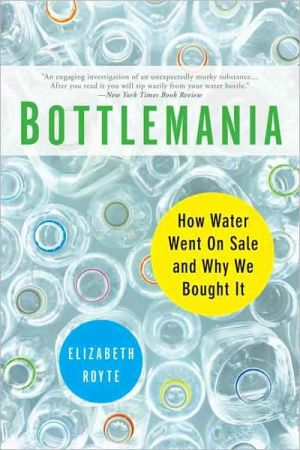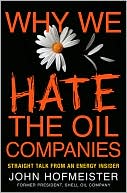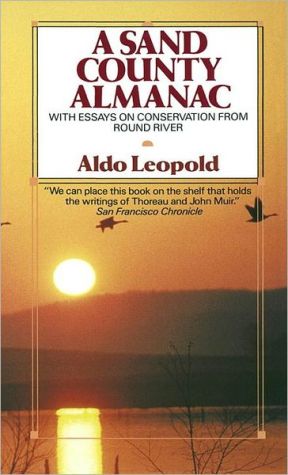Bottlemania: How Water Went on Sale and Why We Bought It
“An engaging investigation of an unexpectedly murky substance…After you read it you will sip warily from your water bottle.”—New York Times Book Review\ Bottled water is on the verge of becoming the most popular beverage in the country. But what’s the cost of all this water—for us and for the environment? In this eye-opening book, Elizabeth Royte does for water what Michael Pollan did for food: She examines the people, machines, economies, and cultural trends that surround it on its journey...
Search in google:
An incisive, intrepid, and habit-changing narrative investigation into the commercialization of our most basic human need: drinking water.Having already surpassed milk and beer, and second now only to soda, bottled water is on the verge of becoming the most popular beverage in the country. The brands have become so ubiquitous that we’re hardly conscious that Poland Spring and Evian were once real springs, bubbling in remote corners of Maine and France. Only now, with the water industry trading in the billions of dollars, have we begun to question what it is we’re drinking and why.In this intelligent, eye-opening work of narrative journalism, Elizabeth Royte does for water what Eric Schlosser did for fast food: she finds the people, machines, economies, and cultural trends that bring it from nature to our supermarkets. Along the way, she investigates the questions we must inevitably answer. Who owns our water? What happens when a bottled-water company stakes a claim on your town’s source? Should we have to pay for water? Is the stuff coming from the tap completely safe? And if so, how many chemicals are dumped in to make it potable? What’s the environmental footprint of making, transporting, and disposing of all those plastic bottles?A riveting chronicle of one of the greatest marketing coups of the twentieth century as well as a powerful environmental wake-up call, Bottlemania is essential reading for anyone who shells out two dollars to quench their daily thirst. The Barnes & Noble Review The zeitgeist has been turning against bottled water for some time now. Mayors in San Francisco, Los Angeles, Minneapolis, and other cities ruled that their local governments would no longer spend taxpayer money on the stuff; restaurateur Alice Waters of Berkeley s famed Chez Panisse struck it from the menu; and The New York Times published two widely read articles -- an editorial titled "In Praise of Tap Water" and a style piece, "Water, Water Everywhere but Guilt by the Bottleful" -- within days of each other last summer. The moment is ripe for Elizabeth Royte s Bottlemania, an admirable, engaging book that examines the social, economic, and environmental impact of bottled water, whose sales now surpass those of beer and milk in the United States.
Ch. 1 An Alarm in the Woods 1Ch. 2 All You Can Drink 19Ch. 3 Mysteries of the Deep 50Ch. 4 The Cradle of the Saco 70Ch. 5 The Public Trough 92Ch. 6 Aftertaste 112Ch. 7 Backlash 137Ch. 8 Town Meeting 175Ch. 9 Something to Drink? 199Acknowledgments 231Appendix 233Selected Bibliography and Further Reading 237Index 243
\ Lisa MargonelliBottlemania is an easy-to-swallow survey of the subject from verdant springs in the Maine woods to tap water treatment plants in Kansas City; from the grand specter of worldwide water wars, to the microscopic crustaceans called copepods, whose presence in New York's tap water inspired a debate by Talmudic scholars about whether the critters violated dietary laws, and whether filtering water on the Sabbath constituted work. (Verdict: no and no.) Water is a topic that lends itself to tour-de-force treatment (the book Cadillac Desert and the movie Chinatown come to mind), as well as righteous indictments and dire predictions (Thirst: Fighting the Corporate Theft of Our Water, When the Rivers Run Dry: Water—The Defining Crisis of the Twenty-First Century). Where others are bold, Bottlemania is subversive, and after you read it you will sip warily from your water bottle (whether purchased or tap, plastic or not)\ —The New York Times\ \ \ \ \ Publishers WeeklyRoyte (Garbage Land) plunges into America's mighty thirst for bottled water in an investigation of "one of the greatest marketing coups of the twentieth and twenty-first centuries." As tap water has become cleaner and better-tasting, the bottled water industry has exploded into a $60 billion business; consumers guzzle more high-priced designer water than milk or beer and spend billions on brands such as Pepsi's Aquafina and Coke's Dasani that are essentially processed municipal water. It's an unparalleled-and almost exclusively American-"social phenomenon." With journalistic zeal, Royte chronicles the questionable practices of Nestle-owned Poland Springs and documents the environmental impact of discarded plastic bottles, the carbon footprint of water shipped long distances and health concerns around the leaching of plastic compounds from bottles. Not all tap water is perfectly pure, writes Royte, still, 92% of the nation's 53,000 local water systems meet or exceed federal safety standards and "it is the devil we know," at least as good and often better than bottled water. This portrait of the science, commerce and politics of potable water is an entertaining and eye-opening narrative. (June)\ Copyright © Reed Business Information, a division of Reed Elsevier Inc. All rights reserved.\ \ \ Library JournalWater. It's the essence of life, the main component of our bodies and our planet. It's free and seemingly accessible-yet millions of Americans pay for bottles of it every day. Environmental author Royte (Garbage Land; The Tapir's Morning Bath) discusses the historical, political, environmental, moral, and even culinary aspects of water. In a journalistic and often humorous manner, she recounts her travels to natural springs and the towns torn apart by their presence and her meetings with water executives and hydrogeologists while discussing the modern implications of the bottle vs. the tap. The story that emerges is an interesting one-there are enough backroom deals to make the plot seem fitting of the film Michael Clayton. Readers will be surprised at the many facets of the story of bottled water, and the blend of narrative with historical fact keeps the book compelling and dynamic. For those inspired to find out more about their water, Royte includes an appendix of Internet resources and a selected bibliography for further reading. Recommended for all public libraries and academic libraries with environmental science programs.\ —Jaime Hammond\ \ \ \ \ \ School Library JournalAdult/High School\ With a seamless blend of first-person observation, detailed anecdotes, and hard research, Royte explores the history and ramifications of those ubiquitous plastic and glass bottles. She addresses the economic, ecological, and cultural weight of water as she visits massive New York aqueducts, struggling rural villages in Maine, and high-tech treatment plants in Missouri. Her findings reflect the distressing trend of our heavy footprint on the environment and its resources. From petroleum-laden bottles and gas-guzzling shipping containers to serious flora and fauna shifts in small-town ponds, the "purity" of bottled water may be murkier than you might have imagined. This book will intrigue a younger generation of readers who might ask, "Wait, major corporations didn't always own water?"-Shannon Peterson, Kitsap Regional Library, WA\ \ \ \ \ \ Kirkus ReviewsJournalist Royte (Garbage Land: On the Secret Trail of Trash, 2005, etc.) traces bottled-water production and the origins of other sources of potable water. The author begins in Fryeburg, Maine, where citizens are engaged in a battle with Poland Spring over the company's water-bottling practices. Such battles are being fought across the country, many against Nestle (which also owns Deer Park, Ice Mountain and others), Coca-Cola (Dasani) and Pepsi (Aquafina). The demand is increasing rapidly, argue the corporations, and they have a point: In the period between 1997 and 2006, sales jumped from $4 billion to $10.8 billion. But don't make that argument to Howard Dearborn, an 81-year-old resident of Fryeburg who insists that Poland Spring's drilling is ruining his lake by its continuous pumping from the underground spring that feeds it. Not to mention the environmental detriment of producing and shipping all that water: In fact, the author notes, "on average, only 60 to 70 percent of the water used by bottling plants ends up on supermarket shelves: the rest is waste." The saga in Maine provides the central narrative and theme-the question of whether water should be a commodity to be bought and sold-but Royte also examines the journey of tap water, revealing the contents and relative quality of various municipal supplies across the country, including New York City and Kansas City, "where the public utility sucks from the Missouri River something that resembles chocolate Yoo-Hoo and turns it into water so good that national magazines shower it with awards and even the locals buy it in bottles." Those readers with weak stomachs may cringe at the author's descriptions of some of thewater-filtration processes-and the many chemicals, bacteria and other nasties the process supposedly filters out-but Royte deserves credit for her tenacity and well-balanced approach. Though she personally chooses not to support the bottled-water industry, she shines just as bright a light on the problems with tap-water production. She even gives voice to "bottled-water expert" Michael Mascha, who enjoys, among others, "Bling-which comes in a corked bottle decorated with Swarovski crystals." A helpful appendix follows the text. Lively investigative journalism.\ \ \ \ \ The Barnes & Noble ReviewThe zeitgeist has been turning against bottled water for some time now. Mayors in San Francisco, Los Angeles, Minneapolis, and other cities ruled that their local governments would no longer spend taxpayer money on the stuff; restaurateur Alice Waters of Berkeley's famed Chez Panisse struck it from the menu; and The New York Times published two widely read articles -- an editorial titled "In Praise of Tap Water" and a style piece, "Water, Water Everywhere but Guilt by the Bottleful" -- within days of each other last summer. The moment is ripe for Elizabeth Royte's Bottlemania, an admirable, engaging book that examines the social, economic, and environmental impact of bottled water, whose sales now surpass those of beer and milk in the United States. \ The heart of Bottlemania is the fascinating fight over water that has polarized the tiny town of Fryeburg, Maine. Fryeburg sits upon one of the aquifers whose water is sold as Poland Spring. While Poland Spring water was being peddled as early as 1845, the company was bought in 1992 by Nestlé, which has gobbled up a number of other brands nationwide -- Deer Park, Zephyrhills, Calistoga, and Ice Mountain among them -- and which has an economic stake in carting off as much of Fryeburg's water as it can get away with.\ But does Nestlé's seemingly unquenchable thirst -- the Poland Spring bottling plant in Hollis, Maine, "fills between 5 and 6 million bottles a day, 358 days a year," Royte reports -- benefit anyone other than the corporation? One of the issues is economic: the Fryeburg utility sells the water to a middleman, a local company called Pure Mountain Springs, for less than a penny a gallon; Pure Mountain turns around and sells it to Nestlé for four cents a gallon more.\ So the very same water that locals get pumped into their taps is enriching a handful of residents but doing nothing for Fryeburg's long-term economic development. (New York City, by comparison, consumes vast amounts of water drawn from upstate reservoirs, but the city pays more than $100 million in annual property taxes to watershed towns.) Even more galling to Fryeburg activists is the fact that the deal wasn't subject to public scrutiny. Such an arrangement wouldn't fly in every state, but Nestlé has benefited from Maine's weak water protection laws.\ In addition to the question of fairness are pressing environmental concerns. One has to do with truck traffic and its attendant pollution: a citizen's group in a Maine community between Fryeburg and Hollis counted 92 tanker trunks barreling through their town in 24 hours. Another has to do with the pumping's effects on the ecosystem. While the vast majority of the area's groundwater is consumed by local residents, not by bottled-water drinkers, residents discharge their water back into the same watershed. "Every gallon of water that thunders into a tanker truck represents a measure that doesn't seep through the aquifer and into wetlands, another gallon that isn't diluting the pollutants that run into the Saco [River] from roads, farms, septic tanks, and industry," Royte explains.\ A third environmental concern is the one that has gotten the most play in the current anti-bottle backlash: bottled water's contribution to global warming. According to Royte, it takes 17 million barrels of oil a year to produce water bottles for the U.S. market; substantially more energy is required to fill those bottles and transport them to consumers. Moreover, a mere 15 percent of water bottles are recycled, as most are polished off in places that lack recycling bins.\ Royte relates this information with intelligence and wit, and with no pretense of objectivity: she is a tap-water enthusiast who practically recoils when the Poland Spring reps she interviews offer her samples of their product. Part of me wishes Royte had ended the book with her cogent critique of bottled water, allowing concerned readers to cut down or break their habit and feel fairly good about themselves.\ But instead, the intrepid journalist, who trained her investigative eye on our trash in a previous book, Garbage Land, decides that understanding the bottled-water boom requires a look at the state of the nation's tap water. It is, of course, a relevant question: if tap is in as good shape as we've been told, why are so many of us shelling out money for water?\ Royte takes an informal poll, asking friends where their tap water comes from. "Most people," she reports, "even those who knew exactly how many miles the arugula on their plate had traveled, had no idea." Her ensuing explanation is interesting and informative, if unsettling. Tap water comes either from groundwater (which begins as snow or rain) or surface water (which is pulled from lakes or rivers). Whichever the case, it is then generally dosed with chlorine or some other disinfectant, filtered, and piped into taps.\ While the tap water available to the vast majority of Americans meets or exceeds the standards set by the Environmental Protection Agency, one of the disquieting studies Royte cites concluded that tap water in 41 states contained 141 chemicals -- from industry, agriculture, development, and, get this, from water treatment itself -- for which the government hasn't set safety standards. "It's enough to make a tap lover cry," she writes ruefully. She describes how overdevelopment has increased erosion and how erosion has increased the levels of sediment in our reservoirs -- sediment that can prevent chlorine from doing its job and can serve as sustenance for disease-causing organisms. Meanwhile, the alum used to sink the sediment particles carries its own risks, and the rise in the use of ethanol, a fuel intended to help clean our air, has an effect on water that reeks of irony: the increased amount of corn planted to create ethanol has resulted in the increased use of the dangerous fertilizer atrazine, which seeps into water supplies following heavy rains. And on and on it goes.\ Despite these findings, at the end of the book Royte is pretty much where she started: she has ditched her plastic refillable bottle for an aluminum one ("so far unindicted by the chemical police"), but she's sticking with tap, and she urges readers to do the same. "It's a self-fulfilling prophecy," she writes. "The fewer who drink from public supplies, the worse the water will get, and the more bottled water we'll need." (Her section on Coca-Cola and Pepsi, whose Dasani and Aquafina brands are simply municipal water subjected to an intense filtration process, includes a sinister quotation from Pepsi executive Susan Wellington: "When we're done, tap water will be relegated to showers and washing dishes." You can almost hear thunderclaps and cackling.)\ Royte gamely concludes on an upbeat note, revisiting Fryeburg and reporting that despite Nestlé's startling purchase of Pure Mountain Springs, the middleman company, there is some good news: the corporation has agreed to submit to stricter environmental monitoring, and the town has defeated an ordinance that would have allowed Nestlé to buy unlimited water from the aquifer. Royte also provides conservation-minded steps readers can take to protect water supplies. Still, her lucid critique of bottled water combined with her disturbing discoveries about tap may leave readers feeling thirsty for a third option. --Barbara Spindel\ Barbara Spindel has covered books for Time Out New York, Newsweek.com, Details, and Spin. She holds a Ph.D. in American Studies.\ \ \








